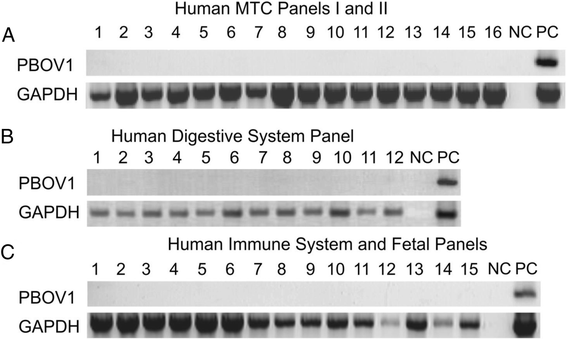Expression of evolutionarily novel genes in tumors
- PMID: 27437030
- PMCID: PMC4949931
- DOI: 10.1186/s13027-016-0077-6
Expression of evolutionarily novel genes in tumors
Abstract
The evolutionarily novel genes originated through different molecular mechanisms are expressed in tumors. Sometimes the expression of evolutionarily novel genes in tumors is highly specific. Moreover positive selection of many human tumor-related genes in primate lineage suggests their involvement in the origin of new functions beneficial to organisms. It is suggested to consider the expression of evolutionarily young or novel genes in tumors as a new biological phenomenon, a phenomenon of TSEEN (tumor specifically expressed, evolutionarily novel) genes.
Figures


Similar articles
-
Mammalian tumor-like organs. 1. The role of tumor-like normal organs and atypical tumor organs in the evolution of development (carcino-evo-devo).Infect Agent Cancer. 2022 Jan 10;17(1):2. doi: 10.1186/s13027-021-00412-0. Infect Agent Cancer. 2022. PMID: 35012580 Free PMC article. Review.
-
Oncogenes, tumor suppressor and differentiation genes represent the oldest human gene classes and evolve concurrently.Sci Rep. 2019 Nov 11;9(1):16410. doi: 10.1038/s41598-019-52835-w. Sci Rep. 2019. PMID: 31712655 Free PMC article.
-
Evolutionarily novel genes are expressed in transgenic fish tumors and their orthologs are involved in development of progressive traits in humans.Infect Agent Cancer. 2019 Dec 5;14:46. doi: 10.1186/s13027-019-0262-5. eCollection 2019. Infect Agent Cancer. 2019. PMID: 31827597 Free PMC article.
-
The Theory of Carcino-Evo-Devo and Its Non-Trivial Predictions.Genes (Basel). 2022 Dec 12;13(12):2347. doi: 10.3390/genes13122347. Genes (Basel). 2022. PMID: 36553613 Free PMC article.
-
Mammalian tumor-like organs. 2. Mammalian adipose has many tumor features and obesity is a tumor-like process.Infect Agent Cancer. 2022 Apr 8;17(1):15. doi: 10.1186/s13027-022-00423-5. Infect Agent Cancer. 2022. PMID: 35395810 Free PMC article. Review.
Cited by
-
De novo gene birth.PLoS Genet. 2019 May 23;15(5):e1008160. doi: 10.1371/journal.pgen.1008160. eCollection 2019 May. PLoS Genet. 2019. PMID: 31120894 Free PMC article. No abstract available.
-
Cancer, Retrogenes, and Evolution.Life (Basel). 2021 Jan 19;11(1):72. doi: 10.3390/life11010072. Life (Basel). 2021. PMID: 33478113 Free PMC article. Review.
-
Pan-cancer surveys indicate cell cycle-related roles of primate-specific genes in tumors and embryonic cerebrum.Genome Biol. 2022 Dec 6;23(1):251. doi: 10.1186/s13059-022-02821-9. Genome Biol. 2022. PMID: 36474250 Free PMC article.
-
Mammalian tumor-like organs. 1. The role of tumor-like normal organs and atypical tumor organs in the evolution of development (carcino-evo-devo).Infect Agent Cancer. 2022 Jan 10;17(1):2. doi: 10.1186/s13027-021-00412-0. Infect Agent Cancer. 2022. PMID: 35012580 Free PMC article. Review.
-
Oncogenes, tumor suppressor and differentiation genes represent the oldest human gene classes and evolve concurrently.Sci Rep. 2019 Nov 11;9(1):16410. doi: 10.1038/s41598-019-52835-w. Sci Rep. 2019. PMID: 31712655 Free PMC article.
References
-
- An G, Ng AY, Meka CSR, Luo G, Bright SP, et al. Cloning and characterization UROC28, a novel gene overexpressed in prostate, breast and bladder cancers. Cancer Res. 2000;60(24):7014–20. - PubMed
-
- Anderson A, Svensson A, Rolny C, et al. Expression of human endogenous retrovirus ERV3 (HERV-R) mRNA in normal and neoplastic tissues. Int J Oncol. 1998;12(2):309–13. - PubMed
Publication types
LinkOut - more resources
Full Text Sources
Other Literature Sources

